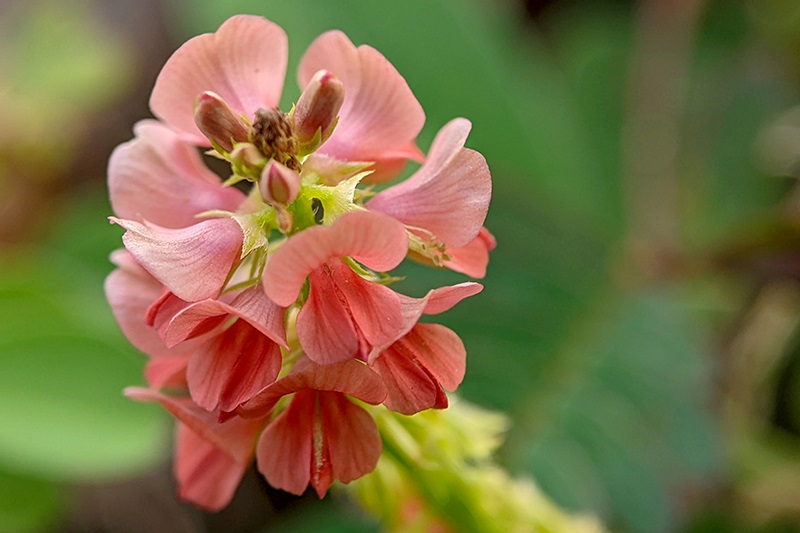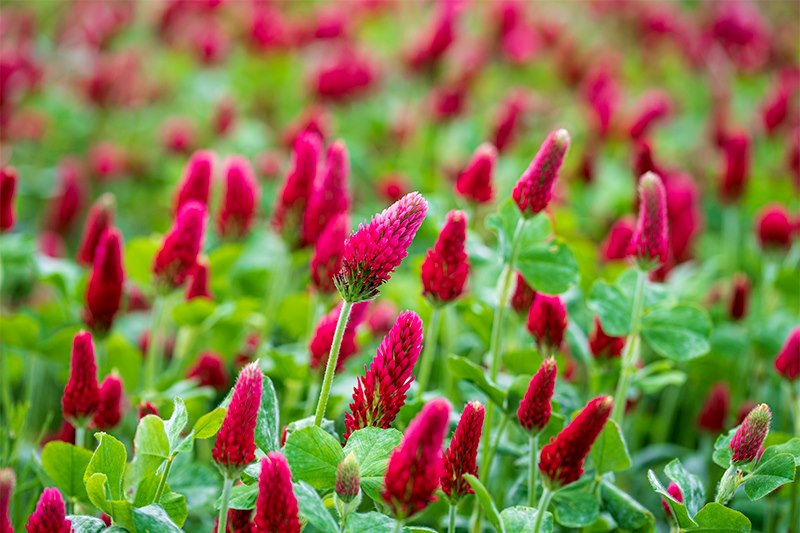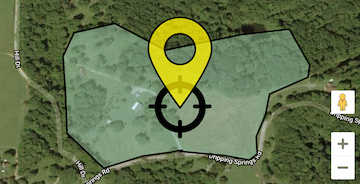Alyceclover-Alysicarpus vaginalis

By Kent Kammermeyer, Senior Wildlife Biologist
Origin/Description
There is a great need in deer management for high quality grazing-resistant summer forage. Alyce clover is one good choice to fill this void. It is native to tropical areas of the Orient. It is not a true clover, but is an erect annual legume with a thin stem, rounded leaves and pink flowers. This plant should not be confused with Alsike clover, another warm season annual (better adapted to the northern US) or with Alice clover, a cool season perennial white clover from New Zealand.
Alyce clover is primarily adapted to the Gulf Coast area but will grow well much further north (mid-Atlantic) if there is adequate summer rainfall. It is best adapted to well-drained, sandy soils but will do well on clay soils also. Best production occurs from June through September. It maintains quality well in late summer when there can be a fairly significant stress period for deer related to low quality vegetation.
Alyce clover is tolerant of moderate soil acidity but does better at pH above 6.0. It responds well to phosphorus fertilization.
Establishment/Mixtures
Seeding rate is 15 to 20 lbs/acre in May or June. Establishment is somewhat slow and weed competition may be a problem in the sensitive small seedling stage. For this reason, on sites with a significant competitive weed seed potential of species such as crabgrass or other summer annual grasses, sowing in mid or late June may be more successful.
Alyce clover does well in a 50:50 mixture with Aeschynomene (American joint vetch) at 10 lbs of each per acre. Both require inoculation with the proper strain of Rhyzobium bacteria at planting to ensure that nitrogen fixation of these legumes will take place properly. Fertilize by soil test or, in lieu of soil test, apply 300lbs/acre of 8-24-24 at planting. This mixture may be the most successful way to go with Alyce clover, especially testing the northern limits of its adaptability. If summer weather is dry or heavy deer grazing takes place immediately after planting, Alyceclover may be lost but the joint vetch should persist since it is more resistant to droughts and less sensitive to grazing in the seedling stage. Both produce high quality growth until first frost and both are very resilient under heavy grazing after establishment (about one month after planting).
Lawrence Wood, biologist at Burnt Pine Plantation in Madison, Georgia, has planted these legumes in a mixture with great success. He says they make excellent summer forage as well as a great place to bow hunt in the September archery season. He was unsuccessful, however, in his attempts to get them to reseed and double crop with wheat.
Management
Alyce clover should not need much attention after planting, except for weed control or management. If weed encroachment threatens the stand, there are two solutions -mowing and chemical spraying. Mowing is probably most appropriate for broadleaf competition and chemicals are more suited to controlling grass competition. Wait at least a month after establishment before doing either one. A grass selective herbicide such as Poast can be applied with sprayer at the rate of 2pints/acre to selectively kill the grass competition without hurting the Alyce clover or joint vetch.
If seed matures and shatters, a volunteer crop can be produced in succeeding years. However, it may be difficult or impossible to get seed production before frost because of heavy grazing by deer even in September. This is the problem Lawrence had.
If the stand is relatively weed-free, a fall crop such as wheat or rye mixed with any of the clovers (crimson, ladino, red, arrowleaf) can be broadcast or drilled at first frost to get a quick and easy cool season crop on the same acreage. Mow the dead stand down on top of the broadcast seeding but leave it standing if a no-till drill is used. The Alyce clover/joint vetch combination should provide more high quality summer forage for deer than virtually any other annual summer legume, including peas and beans. It's worth planting if you are not in a drought prone area.




